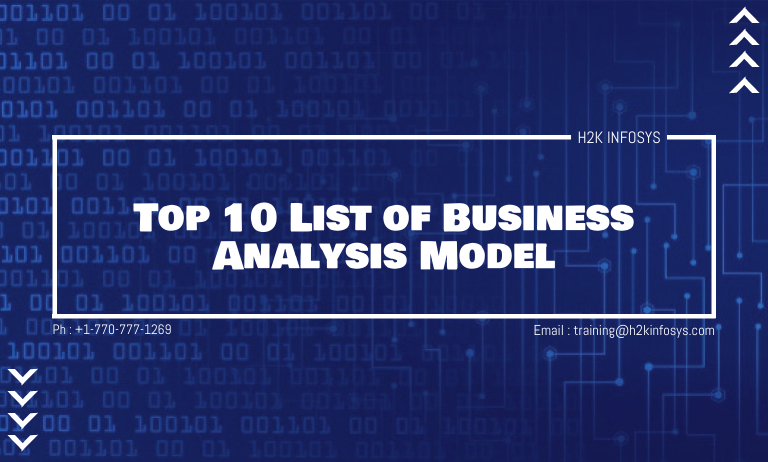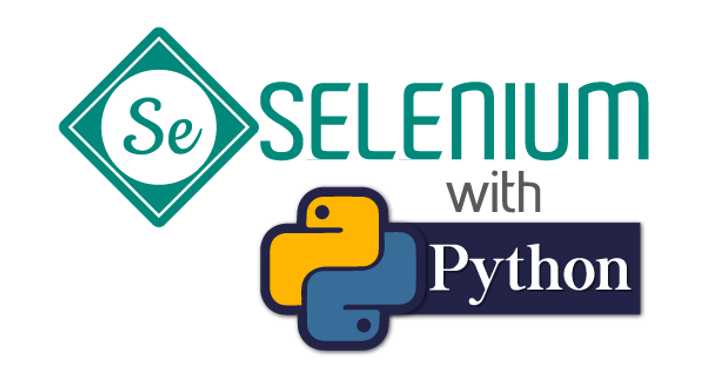If you’ve been working in the business analysis field for some years, you must have come across several Business Analysis models. These are business analysis techniques used by business analyst professionals who have undergone business analyst training at some point in their careers. So, as a certified professional in this field, it is highly important to learn about the best business analysis models.
In this guide, I will introduce you to ten of the best business analysis models.
What is Business Analysis Model?
A business analysis model is a method of outlining the steps that a business should take to complete a particular process. This helps to improve process efficiency and also ensure an organization complies with industry regulations.
The main purpose of business analysis models is to provide the best business solutions that will boost the growth of business organizations across the world.
Here is a list of the top 10 business analysis model;
- Business Process Modelling
- User Stories
- SWOT Analysis
- Brainstorming
- MOST Analysis
- Use Case Modelling
- CATWOE Analysis
- Business Model Analysis
- PESTLE Analysis
- Requirement Analysis
Now, let’s have a look at a brief explanation of each of these business models.
1. Business Process Modelling:
Business Process Modelling (BPM) is a business analysis tool that shows the graphical representation of an organization’s workflow to improve business processes. Business analyst professionals must have undergone business analyst course training to be able to use this model effectively.
This is a business framework that deals with process design, strategic planning, technical analysis of complex business solutions, and business model analysis.
Business Process Modelling is depicted with a diagram that shows two notions;
- Unified Modelling Language Activity Diagram (UML Activity Diagram)
- Business Process Modeling Notation (BPMN)
These notions involve business process reengineering described by an organized workflow. The business process reengineering consists of identifying business processes, succession planning, update as-is, and employee engagement.
Business Process Modelling is one of the best BA techniques used in the industry.
2. User Stories:
User Stories is a modern-day business analysis model that deals with designing, data gathering, requirements solutions, and project development. This is a major method used in agile modeling for collecting business requirements from product end-users to provide the best solution for business growth.
A major advantage of this business analysis model is the fact that it helps BA professionals with in-depth business analyst training to analyze requirements from user perspectives. This ensures that the outcome of the analysis is highly effective and user-focused. The need for iteration in business analysis is a major reason why this model is applied for business solutions.
You can learn more about the User Stories business analysis model if you enroll in business analyst certification online. This is a program that trains business analysts on how to apply the best business analyst techniques for their practice.
3. SWOT Analysis:
SWOT Analysis is one of the best business analysis models in the BA field. It is a basic fundamental tool that especially evaluates the weakness and strength of a business and also identifies the sets of opportunities that can make a business grow while identifying possible threats too. So, the word “SWOT” is an acronym.
Here is a break down of the meaning of “SWOT”:
- S – Strength (High Integrity and Excellent Product Service)
- W – Weakness (Poor Brand Image and Financial Deficiency)
- O – Opportunities (Target Audience Shift and Political Support)
- T – Threats (Economic Trends, Funding Changes and Market Trends)
Business stakeholders make use of this business analysis model to make strategic decisions that will push an organization towards achieving its business targets. It is a model that helps them maximize business opportunities and capitalize on the strengths of a business while limiting negative impacts caused by threats and business weakness. SWOT Analysis is a four-grid strategic technique that can be used at any enterprise-level for developing business strategies.
4. Brainstorming:
This business analysis technique helps to generate business ideas, analyze business challenges while designing possible solutions to solve those challenges.
This is a group problem-solving technique applied in an organization where every member of a team contributes various ideas that will help the company’s growth.
While group brainstorming tends to be more applicable in big organizations, BA professionals also recommend independent brainstorming as it helps to conclude within a less period. This technique involves creative thinking which suggests new ideas and business approaches that will be of great benefit.
Brainstorming is a very popular technique used amongst certified business analysts that has done business analyst certification online at some point in time.
5. MOST Analysis:
This is a very powerful business analysis model that deals with the analysis of what an organization does and how business plans can be used to attain business goals. It is a technique that guides business analyst professionals on what to do to maintain a strategic business alignment. The business analyst course they must have studied will make them understand the purpose of an organization.
MOST Analysis has four major elements namely;
- M – Mission (The main purpose of an organization)
- O – Objective (Major goals that help achieve an organization’s mission)
- S – Strategy (Options available to achieve an organization’s objective)
- T – Tactics (How an organization strategy is taken into action)
This business analysis framework is a highly structured technique that is strictly followed by professionals at all levels of an organization. This is simply because it ensures an organization does not lose focus on its ability and mission statement.
6. Use Case Modelling:
Use Case Modelling is one of the best business analysis modeling techniques used by business analysts across the world. It involves the pictorial illustration of how business functions are meant to work within a system through user interactions.
This system is known as the “TimeSheet Management System”. This technique is mainly applied during the design phase of a software development project. This is simply because it helps professionals in their business analyst training career to transform business requirements into highly functional specifications.
The primary components of Use Case Modelling are;
- System: The outline of the UML diagram
- Use Case: The functionalities executed under the TSM process
- Actors: The human-like user associated with use case functionality
- Association: An actor’s interaction with the system via use cases
- Stereotypes: The relationship between use cases
7. CATWOE Analysis:
CATWOE is a business analysis model that is concerned with the analysis of what a particular business setup is trying to achieve. It focuses on business goals by figuring out how business targets can be reached. It is a form of generic thinking process that identifies business challenges and how the profound solutions will impact such business and those associated with the business.
The acronym CATWOE means;
- C – Clients (The major beneficiaries of a business)
- A – Actors (The major players of a business process)
- T – Transformation (The transformation process of a system)
- W – World View (The business impact and bigger picture)
- O – Owner (The owner of a business and their impact)
- E – Environmental Constraints (How constraints impact business solutions)
So, the CATWOE business analysis model focuses on key areas of dilemma and how invented solutions can impact an organization as a whole. This helps BAs to prioritize important aspects of business growth that will please stakeholders.
8. Business Model Analysis:
Business Model Analysis is included on this list because it helps business analysts to understand every factor associated with the business of an organization. These factors include company policies, process techniques, and market approaches.
This model allows for a better understanding of what a business is all about and what needs to be done to make it successful. For instance, it ensures a company is offering good value to its customers and clients. It identifies the cost needed to provide value offering and also ensures an organization’s revenue model is stable.
Furthermore, the product design cost, cost of production, marketing strategy, and company revenue management is better handled with business model analysis.
9. PESTLE Analysis:
PESTLE Analysis is a business analysis model that takes care of environmental factors affecting business growth. These environmental factors mainly influence business decisions during strategic planning and the best way to ensure that one arrives at a final business decision is to apply the PESTLE Analysis technique.
The environmental factors make up the acronym PESTLE which are;
- P – Political (Government Body, Initiatives and Policies)
- E – Economic (Labor, Energy Cost, and Inflation Rates.)
- S – Social (Education, Lifestyle, Population, Media, and Culture.)
- T – Technological (Information, Technology, and Communication.)
- L – Legal (Government Law, Standards, and Regulations.)
- E – Environmental (Waste, Weather, Pollution, and Recycling.)
Enrolling in business analyst training will give you more knowledge about this business analysis model. A business analyst can use PESTLE Analysis to analyze the environmental factors where an organization operates while they identify how the factors will affect business performance soon.
10. Requirement Analysis:
This business analysis model is a major part of a project lifecycle and it is applied when business stakeholders propose business solutions. This final BA technique on the list involves business analysts conducting special interviews to identify and understand business requirements. This interview process involves;
- Questions
- Captures
- Interprets
- Workshops
It is very important to carry out proper requirement analysis to attain an effective and efficient software project development. It is very crucial.
Conclusion
In conclusion, all the business analysis models listed in this guide are excellent business analysis techniques that should be in every business analyst toolbox.
A business analyst should be dedicated to investigating and evaluating business problems discovered by clients and stakeholders. When a business analyst does that, he or she is expected to suggest possible solutions that will be effective.
The best way to make this happen is by making use of business analysis models.
These BA models will make the practice of business analysis an enjoyable and successful one. A certified business analyst must be able to apply each of these models for business solutions in any organization they find themselves.
One of the basic things you’ll learn when you enroll for a business analyst course online is the introduction to some of the best business analysis models. This vital aspect of business analyst training should be handled with sincere interest. To learn more about business analysis as a profession, ensure you acquire business analysis certification online whenever it’s convenient for you.






























2 Responses